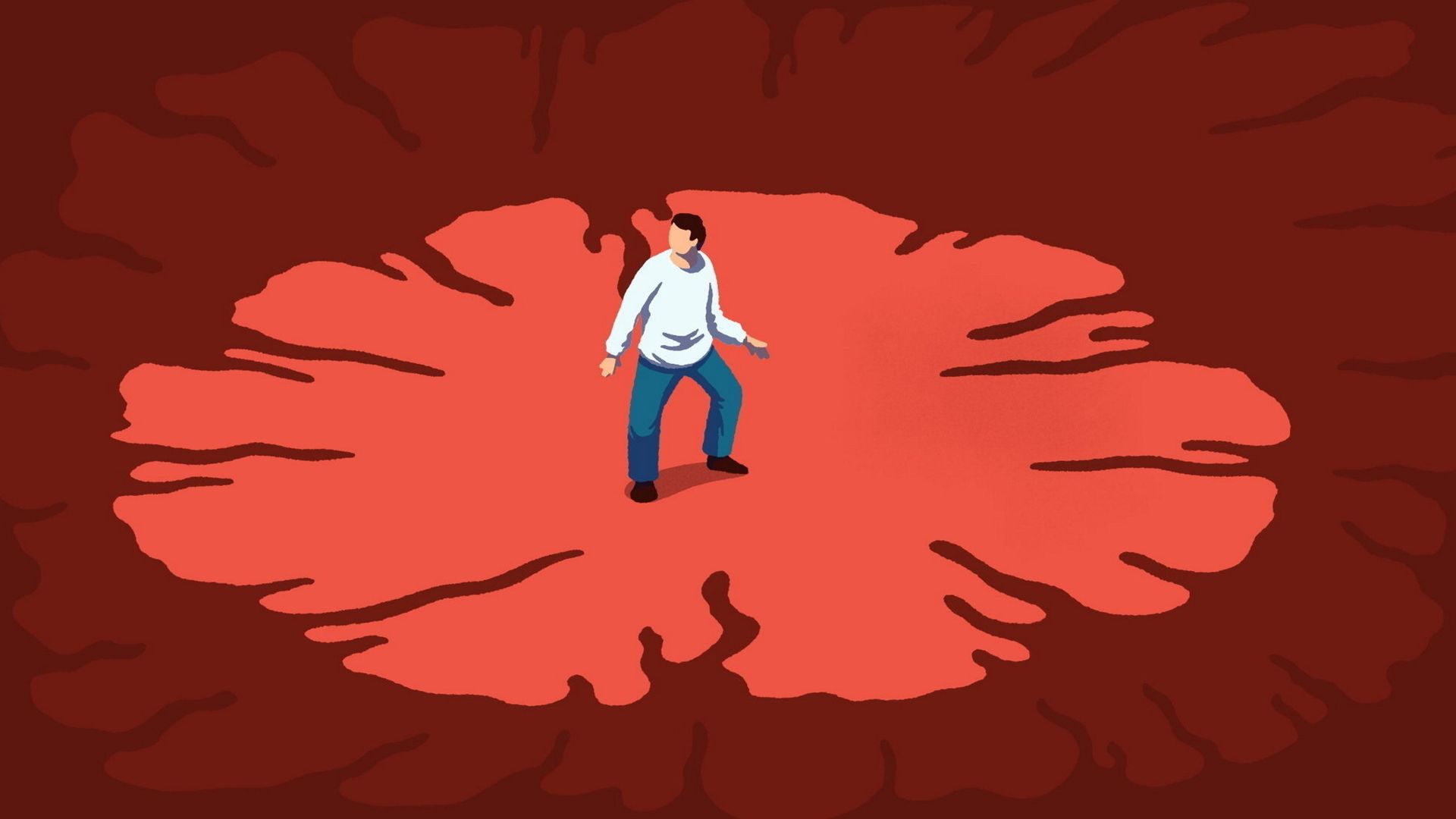尊敬的用戶您好,這是來自FT中文網的溫馨提示:如您對更多FT中文網的內容感興趣,請在蘋果應用商店或谷歌應用市場搜尋「FT中文網」,下載FT中文網的官方應用。

The writer is a science commentator
本文作者是一位科學評論員
The idea of cancer as predominantly a disease of old age is beginning to creak. An analysis last year showed that, in the G20 group of industrialised nations, rates of several cancers are rising faster among the young than among the old.
癌症主要是老年人的疾病的觀念開始出現問題。去年的一項分析顯示,在工業化國家集團20國集團中,一些癌症的發病率在年輕人中的成長速度比老年人更快。
Now, scientists at the American Cancer Society have confirmed the trend across a wider range of cancers, with statistics broadly suggesting that a Gen X or Millennial is more likely to develop certain types of the disease than her Baby-boomer parents. Half of the 34 types studied showed a “birth cohort effect”, meaning they are increasingly common among successively younger cohorts. For pancreatic and kidney cancer, for example, the incidence rate among those born in 1990 was two to three times the rate of those born in 1955.
現在,美國癌症協會(American Cancer Society)的科學家們已經證實了更廣泛範圍的癌症趨勢,統計數據普遍表明,X世代(Gen X)或千禧一代比他們的嬰兒潮一代父母更有可能患上某些類型的癌症。在研究的34種類型中,有一半顯示出「出生隊列效應」,這意味著這些癌症在連續更年輕的羣體中越來越常見。以胰腺癌和腎癌爲例,1990年出生者的發病率是1955年出生者的兩到三倍。
The academics who published their findings in Lancet Public Health last week say these are “generational shifts in cancer risk”. The shifts come with profound implications. A tide of younger patients poses a challenge for future cancer care, whether it is rethinking screening programmes or finding ways to preserve fertility during treatment. As the disease itself metastasises into something unfamiliar, the dream of consigning it to history grows more challenging.
上週在《柳葉刀公共衛生》(Lancet Public Health)上發表研究結果的學者們表示,這些是「癌症風險的世代轉變」。這些轉變帶來了深遠的影響。年輕患者的增加給未來的癌症護理帶來了挑戰,無論是重新思考篩查計劃,還是尋找在治療過程中保護生育能力的方法。隨著疾病本身轉變爲一種陌生的形態,將其徹底消滅的夢想變得更加具有挑戰性。
Hyuna Sung, an Atlanta-based epidemiologist at the ACS, teamed up with colleagues to dig into American cancer registry data on more than 23mn people who were diagnosed with 34 types of cancer between 2000 and 2019. The researchers also drew on registries recording over 7mn deaths from 24 types of cancer over the same period.
美國癌症協會(ACS)駐亞特蘭大的流行病學家Hyuna Sung與同事合作,深入研究了2000年至2019年間被診斷出患有34種癌症的2300多萬人的美國癌症登記數據。研究人員還參考了同期記錄的24種癌症導致的700多萬人的死亡數據。
The data was sorted according to birth year, with patients grouped in five-year intervals from 1920 to 1990. Previous research by the ACS and other groups has found evidence of several cancers — including colorectal (or bowel), pancreatic, kidney, gallbladder and testicular — rising in the under-50s. Sung and colleagues found that same pattern writ large.
數據根據出生年份進行分類,患者從1920年到1990年每5年進行一次分組。美國癌症學會和其他組織之前的研究發現,包括結直腸癌(或腸癌)、胰腺癌、腎癌、膽囊癌和睪丸癌在內的幾種癌症的發病率在50歲以下人羣中呈上升趨勢。Sung和他的同事們發現了同樣的模式。
Among the new conditions trending upwards in younger generations are cancers of the small intestine, liver cancer in women and anal cancer among men. In some cases, death rates tacked upwards with incidence, including for colorectal, liver (in women) and testicular cancers. “These findings are sobering as they indicate the increased cancer risk in younger generations is not merely an artefact due to more frequent cancer detection and diagnosis,” Sung told me. “Instead, it points to a genuine increase in cancer risk at the population level, with the increase in incidence being substantial enough to outweigh improvements in cancer survival.”
在年輕一代中,小腸癌、女性肝癌和男性肛門癌等新發病症狀呈上升趨勢。在某些情況下,死亡率與發病率呈正相關,包括結直腸癌、女性肝癌和睪丸癌。宋教授告訴我:「這些發現令人警醒,因爲它們表明年輕一代的癌症風險增加並非僅僅是由於更頻繁的癌症檢測和診斷所導致的人爲現象。相反,它指向了人羣層面上癌症風險的真正增加,發病率的增加足以抵消癌症生存率的改善。」
That many of the cancers afflicting younger patients are gastrointestinal — including colorectal, bile duct, liver and gall bladder — might offer clues. Jeffrey Meyerhardt, chief clinical research officer at Harvard University’s Dana-Farber Cancer Institute, which recently opened a clinic focusing on under-50s with colorectal cancer, says there are likely unidentified risk factors but there are also known risk factors, like sedentary behaviour, a change in diet, plus rising rates of obesity and diabetes.
許多年輕患者患有的癌症是胃腸道癌症,包括結直腸癌、膽管癌、肝癌和膽囊癌,這可能提供了一些線索。哈佛大學(Harvard University)達納-法伯癌症研究所(Dana-Farber Cancer Institute)的首席臨牀研究官傑弗裏•邁耶哈特(Jeffrey Meyerhardt)表示,可能存在未知的風險因素,但也有已知的風險因素,如久坐不動的行爲、飲食改變以及肥胖和糖尿病的不斷增加。最近,該研究所開設了一個專門針對50歲以下結直腸癌患者的診所。
Those same factors could be disrupting the gut microbiome, the balance of internal bacteria thought to influence health and immunity. “But exactly what those [microbiome] changes are and how to reverse or improve them are not known,” Meyerhardt said.
這些因素可能會干擾腸道微生物羣,這是一種被認爲會影響健康和免疫力的內部細菌平衡。邁耶哈特說:「但是這些[微生物羣]的變化是什麼,如何扭轉或改善它們,目前還不清楚。」
Bafflingly, many of the new clinic’s young patients are in good shape, exercise regularly and eat healthily. That is prompting a hunt for environmental carcinogens capable of affecting entire generations. Last year, New Zealand researchers showed that microplastics, now found everywhere and ingested from infancy onwards, could disrupt the gut lining. The prevalence of microplastic pollution since the 1960s — the tiny plastic particles come from consumer products and the breakdown of industrial waste — has the right timeline and might explain the compounding effect between generations, but it needs further investigation.
令人費解的是,這家新診所的許多年輕患者身材良好,經常鍛鍊,飲食健康。這促使人們尋找能夠影響整個世代的環境致癌物。去年,紐西蘭的研究人員發現,現在隨處可見的微塑膠,從嬰兒開始就被攝入,可能會破壞腸道內壁。自20世紀60年代以來,微塑膠汙染的流行——來自消費品和工業廢物分解的微小塑膠顆粒——有正確的時間線,可能解釋了世代間的複合效應,但這需要進一步的調查。
In the meantime, screening programmes are changing: in the US, a task force has advised breast cancer screening starts a decade earlier at 40; but experts agonise over doing something similar for colorectal cancer, because it would still miss those in their twenties and thirties.
與此同時,篩查計劃也在發生變化:在美國,一個工作組建議乳腺癌篩查應該從40歲開始,但專家們對於是否對結直腸癌做類似的事情感到猶豫,因爲這仍然會錯過二三十歲的人羣。
These are delicate calls. Wider screening carries downsides: expense, radiation exposure and false positives. And the over-50s still make up 90 per cent of cancer cases. Still, the shifting burden of disease deserves closer policy attention now.
這些都是微妙的決策。更廣泛的篩查會帶來一些不利因素:費用、輻射和假陽性。而且50歲以上人羣仍佔癌症病例的90%。儘管如此,疾病負擔的變化現在仍然值得政策部門給予更密切的關注。